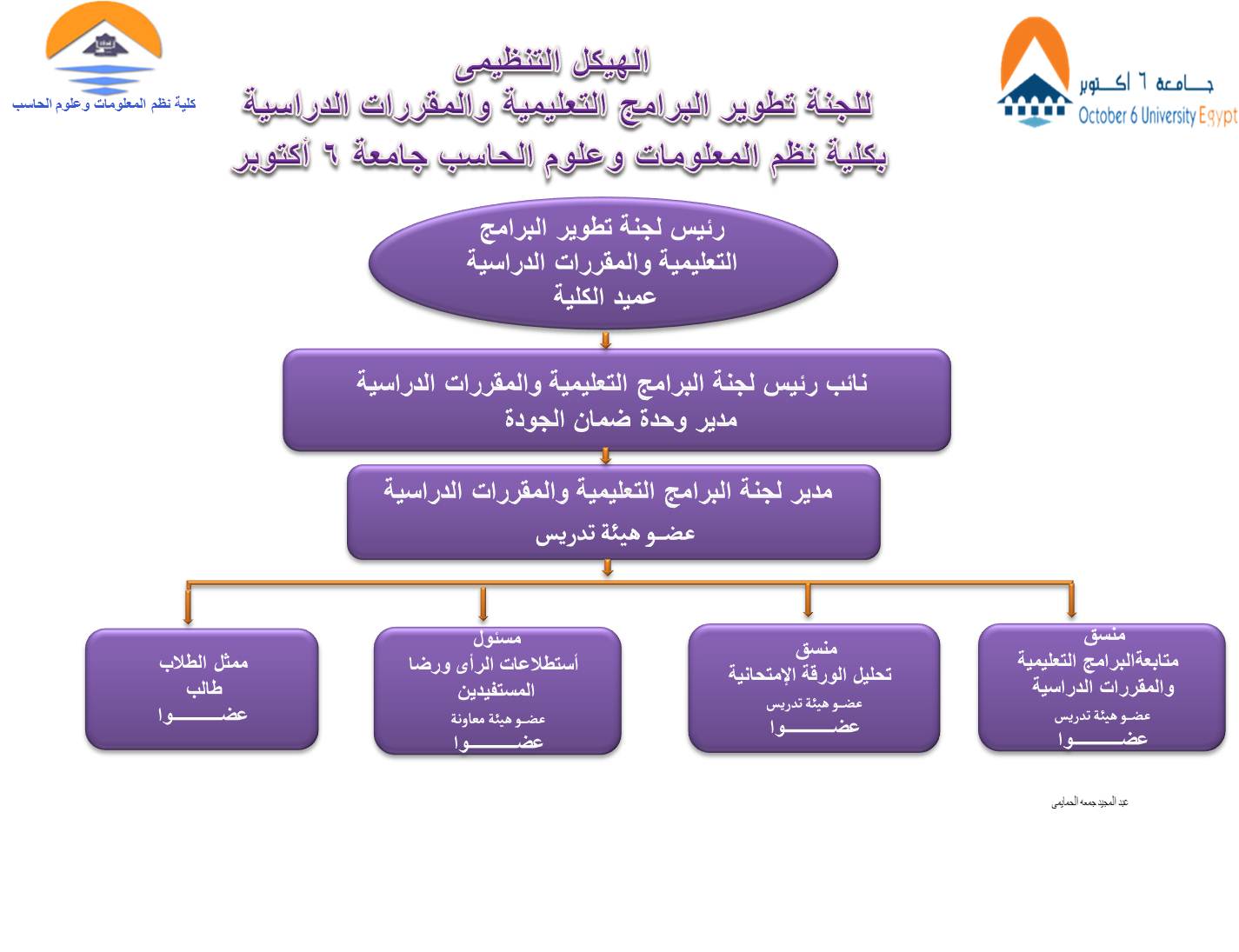|
 Duties and authorities of the Committee of Educational Programs and Courses Duties and authorities of the Committee of Educational Programs and Courses
1- Revising the current mission, vision and objectives of the program to suggest any possible modifications in the light of the current changes in the program, and present them to the Faculty Council for amendment and approval.
2- Ensuring that the faculty adopts academic standards for its educational programs according to the recognized national standards, and takes the necessary measures to achieve them in accordance with the faculty’s vision and mission.
3- Formulating and updating programs' and courses' descriptions in accordance with the National Academic Reference Standards in a way that ensures providing graduates with the specifications and skills necessary for the labour market.
4- following up the preparation and documentation of the annual reports of educational programs and courses, collecting them from the departments, and making sure they were written in accordance with the official forms of the National Authority of Quality Assurance, guaranteeing monitoring performance and implementing the executing plan of the previous academic year.
5- Assuming the role of a guide and consultant:
6- Making certain that each educational program (department) identifies and implements its academic standards in accordance with the vision and mission of the faculty.
7- To make sure that each educational program contains a file for each course (course file) that includes:
· Course description
· A sample of previous test papers
· Student course evaluation made by students
· The percentage of successful, failed, and dropout students
· Any other relative information
8- Monitoring the present situation of undergraduates’ courses to recognize their issues and propose the appropriate strategies to discuss and improve them through:
· Organizing and identifying the percentages of different courses in each program.
· visualizing the development of the faculty regulations for implementing the credit hours system
· Adding or cancelling courses with the aid of professors from other faculties, taking the views of faculty staff and students are into consideration.
· Establishing mechanisms for the system of self-learning (a sample from students’ work as well as a list of the fields and sources of self-leaning in the faculty.
· Encouraging e-learning, in which some courses are converted into electronic courses in different programs. ( samples and statistics)
· Providing students with the skills needed for the labour market and the contemporary changes.
· Establishing mechanisms for the activation of the field-training program for students (mechanisms for supervision, monitoring, and evaluation) and the participation of community parties in evaluating and surveying students.
7- Revising the scientific contents of courses and suggesting mechanisms for developing them as well as determining the extent to which they coincide with intended learning objectives of the program, teaching methods, and assessment with the help of the reports of other committees which are related to the matrix of the program.
8- Preparing the internal regulation, course files, a list of teaching methods, a list of books and references, and a list of documents for programs.
9-Preparing the teaching and learning strategies, and program objectives regularly in accordance with the vision and mission of the faculty for accreditation them by the faculty board.
10-Periodical assessment of programs and courses (through surveying students, faculty staff and beneficiaries, and through the reports of external evaluators and third parties, as well as the analysis of test results) to determine the extent of their convenience regarding the development of the field of specialty and the needs of the labor market to take the necessary corrective actions.
11-Recommending the nomination of external auditors or third parties to review courses and programs.
12-Making the faculty staff aware of the academic standards (workshops, seminars, meetings, open discussions, etc.)
13-Making a database of educational programs.
|